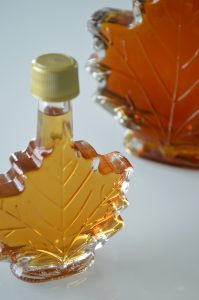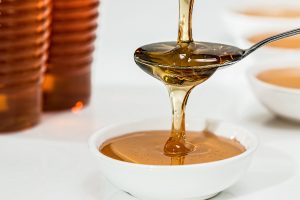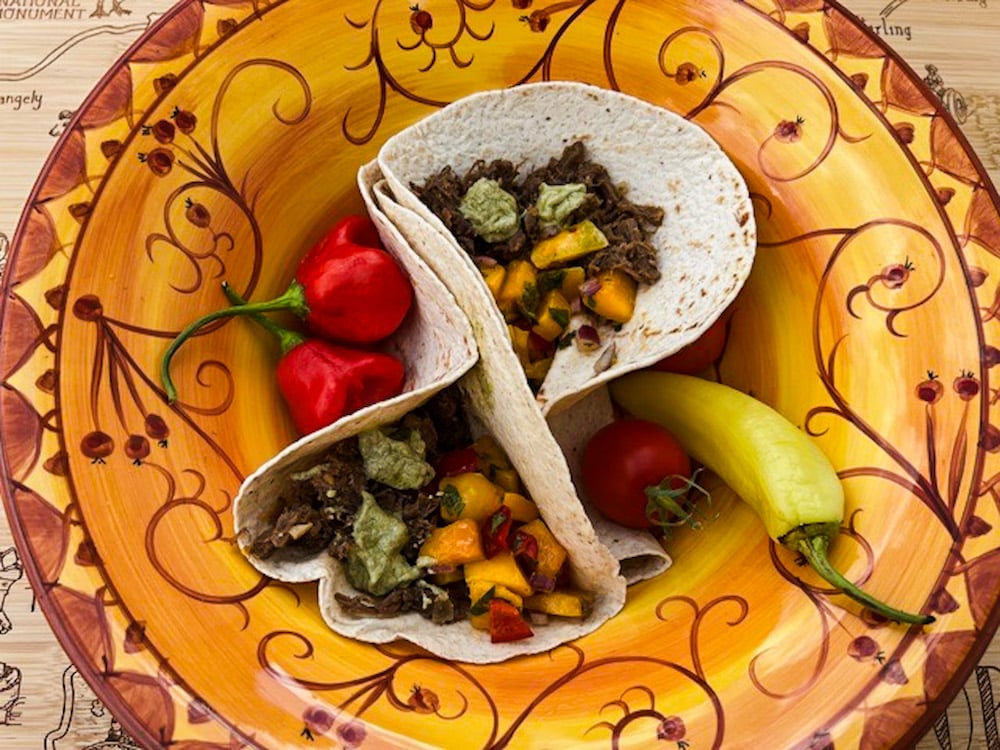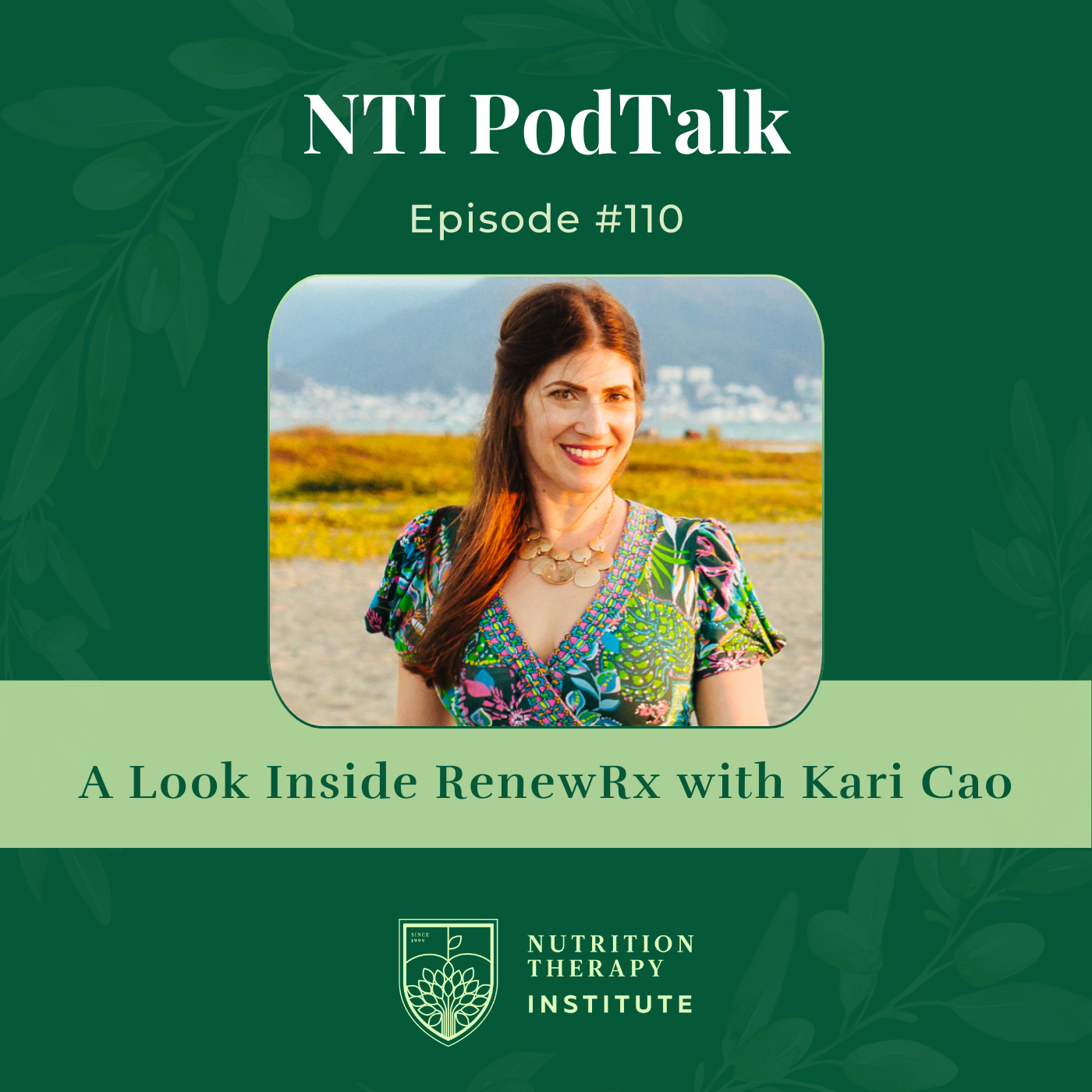
Share this post!
Common types of added sugar like high fructose corn syrup, honey, and cane sugar are easy to identify. But food marketers have done a wonderful job of disguising equally harmful sugars to befuddle the consumer. Avoid befuddling and get the scoop on sugar…read this NTI blog!
The Scoop on Sugar
By now, we’re in full-blown holiday mode: travel plans are finalized, students are struggling to concentrate in class, and every retailer in town (for better or for worse) is playing Christmas music. ‘Tis the season to be merry and bright, right?
Amidst the pine trees and good cheer, this time of the year can also be accompanied by other, less charming realities. Stress due to differing familial political views and dizzying demands, can quickly push us towards coping mechanisms that we wouldn’t otherwise turn to.
For example: I recently found myself snooping through the pantry of my fiancé’s family for an Oreo or two with breakfast when visiting Kansas…
The appeal of refined sugar and carbohydrates is indisputable. But it attracts us in the same way that other toxins like drugs or alcohol do: it makes us feel good.
By now we all know that sugar is bad for us. It can cause diabetes, increase the proliferation of cancer cells, and contribute to widespread inflammatory conditions of the body and brain. If you didn’t read part 1 of “The Scoop on Sugar”, you’ll want to check that out to learn about the role and forms of sugar!
Even though we know what we’re up against, sometimes the act of identifying sugar in food can be our biggest obstacle as consumers.
Hidden Sources of Sugar
Have you ever walked down the baby aisle of your grocery store and taken a look at the ingredients in the “health foods” that are marketed to parents? It kills me. Often times the second ingredient found in organic granola bars is rice bran syrup. That is sugar, people!
Common types of added sugar like high fructose corn syrup, honey, and cane sugar are easy to identify. But food marketers have done a wonderful job of disguising equally as harmful sugars to befuddle the undiscerning consumer.
Keep an eye out for these unusually-named sugars on food labels:
- Maltodextrin
- Corn sweetener
- Tapioca syrup
- Rice syrup
- Evaporated cane juice
- Barley malt
- Ethyl maltol
- Fruit juice concentrate
It’s also important to remember that as carbohydrates break down, they naturally convert to their simplest form, mono and disaccharides. So, just because added sugar isn’t present in packaged food, doesn’t mean that a diet is free from sugar altogether.
Foods containing flour like pasta, breads, and cereals are major offenders. Root vegetables like yams, potatoes, beets, and carrots; as well as fruit; are also high in natural sugars. While eating these types of whole foods as part of a well-balanced diet isn’t anything to lose sleep over, the body can quickly become overloaded when foods containing added sugar are thrown into the mix. I.e. holiday treats.
Even though nutritionally speaking, all sugar is created equal, there are some alternatives that offer benefits that refined sugar does not.
My favorite sugar alternatives:
Stevia
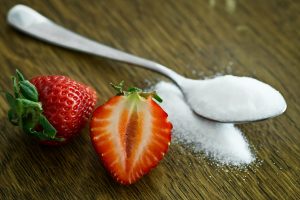
Stevia is sugar a substitute derived from a plant that is native to South America. It contains two compounds that give it its sweet flavor: Stevioside and Rebaudioside A. These compounds are hundreds of times sweeter than sugar, which means much less is needed for cooking or baking. While you can buy whole or crushed stevia leaves, the most common forms found in grocery stores are powders or extracts. The upside: It has zero calories and doesn’t impact blood sugar. The downside: for some, Stevia leaves an unpleasant aftertaste.
Xylitol & Erythritol
Both of these sugar substitutes are sugar alcohols, or polyols, and they don’t elicit the same glycemic response that sugar does. Xylitol is absorbed at a slower rate in the small intestine, which can cause diarrhea if consumed in large quantities. Erythritol is more readily absorbed and eliminated within 24 hours of ingestion. Both sugar alcohols have been shown to improve oral health by inhibiting the growth of bacteria that cause cavities. However, please beware that xylitol is fatal to dogs in very small amounts.
Date Paste
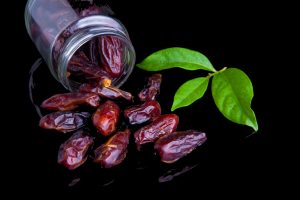 I love date paste because even though it’s quite high in sugar, it is derived from a whole-food source. Dates contain potassium, iron, calcium, magnesium, and copper, to name a few; as well as being a great source of fiber. The type of sugar in dates, invert sugar, is more easily absorbed and assimilated by the body than refined sugar. You can make your own date paste by following this recipe, or find it in a jar at your local health food store.
I love date paste because even though it’s quite high in sugar, it is derived from a whole-food source. Dates contain potassium, iron, calcium, magnesium, and copper, to name a few; as well as being a great source of fiber. The type of sugar in dates, invert sugar, is more easily absorbed and assimilated by the body than refined sugar. You can make your own date paste by following this recipe, or find it in a jar at your local health food store.
Maple Syrup
Slightly more regulatory of blood sugar than refined sugar, maple syrup also boasts some nutrient density that other sugars do not. One tablespoon contains about one-third of the recommended daily intake of manganese and six percent of the recommended zinc intake. It also contains high levels of antioxidants. Similarly to date paste, maple syrup is a whole “real” food derived from the sap of maple trees; and the closer we can get to the source of any food, the better.
Raw Honey
Consuming raw honey, especially from your geographic area, can assist in mitigating allergies and boosting overall immune function. Honey has antimicrobial properties, which can boost the body’s immune response. However, it doesn’t negate the fact that honey contains fructose and glucose, which are still inflammatory when consumed in high quantities. The upside: it’s a whole food with immune-boosting potential. The downside: it still contains sugars that impact liver and metabolic function.
READ MORE >> The Sweet Benefits of Honey
These sugar substitutes certainly do not exhaust the list of all recommended alternatives, but they’re a good place to start. Remember: keep it real. Avoid food that has been processed, bleached, refined, and removed from its original source. Even when it comes to sugar, a whole-food source is a healthier choice than any other trendy sugar-free sweetener.
While the best and most sustainable way to engage with food is by finding the balance between indulgence and deprivation, I say, “You’re sweet enough as you are.” Give yourself a little leeway this time of the year, but otherwise consume sweets in moderation. Focus your sweet tooth on foods that are naturally high in sugar like sweet potatoes, berries and other local fruits. You deserve the gift of health this holiday season, and always.
For how sugar functions in the body read the Scoop on Sugar – Part 1. Another great post to check out is Sugar’s Not-So-Sweet Side.
Nutrition Therapy Institute (NTI) creates optimal health through nutrition education. If you are interested in learning more about the comprehensive education offered at NTI please visit our programs page.
About the Author: Anneliese Pyatt is a certified Master Nutrition Therapist, an NTI graduate, and has a thriving practice, Wildflower Family Wellness, specializing in educating parents about how to support their struggling and dysregulated children.
Images: Richard Semik/123RF; Image by mali maeder is free for use by Pexels; Image by Riki Risnandar is free for use by Pexels; Image by Nadine Primeau is free for use by Unsplash; Image by Pixabay is free for use by Pexels
Share this post!

